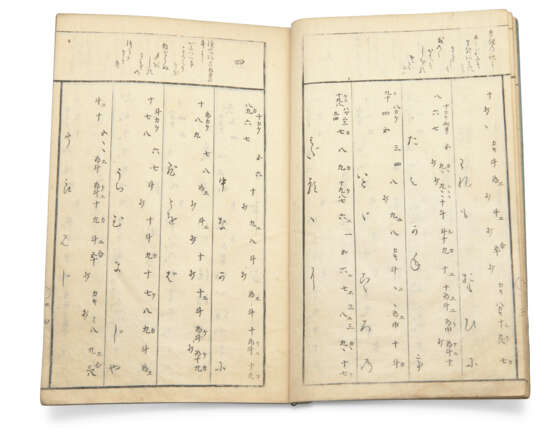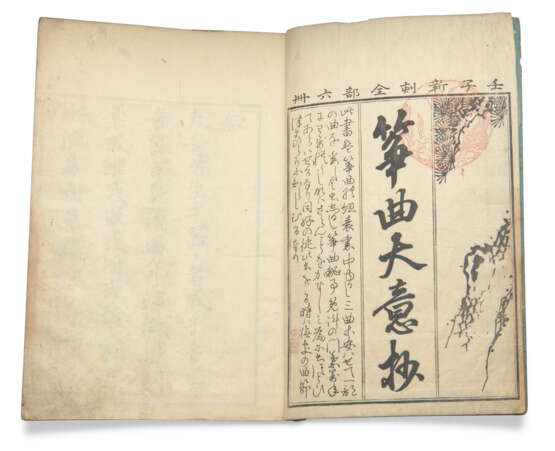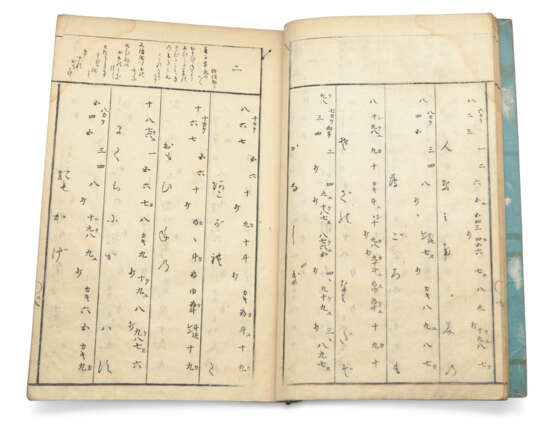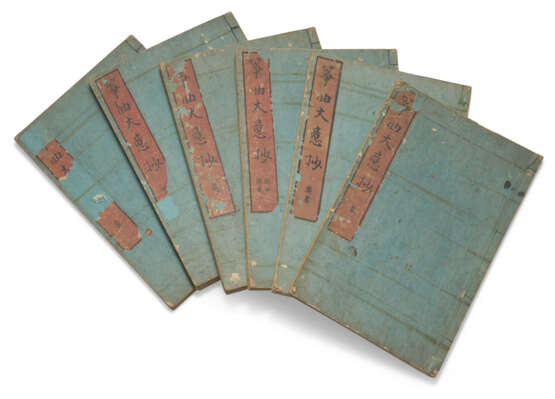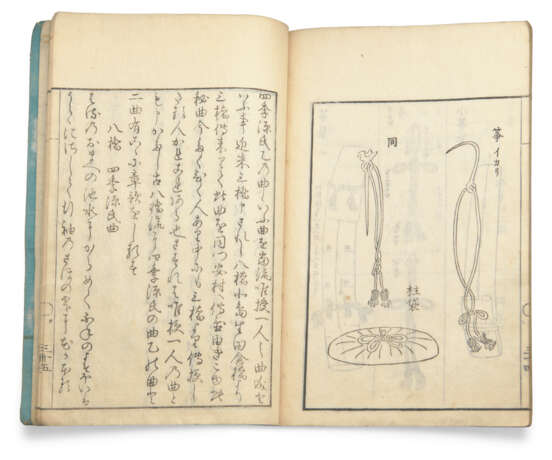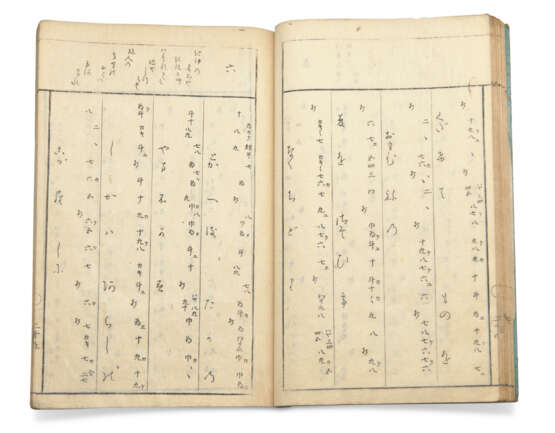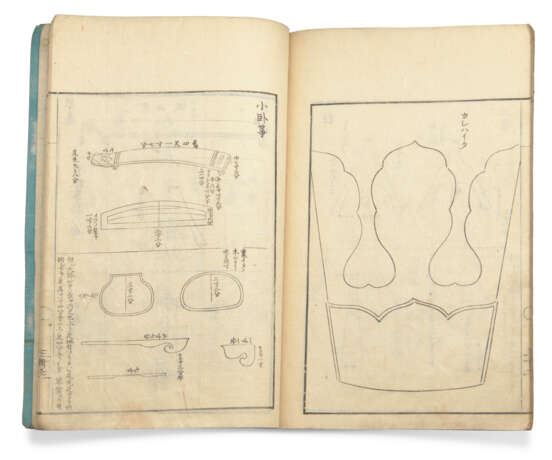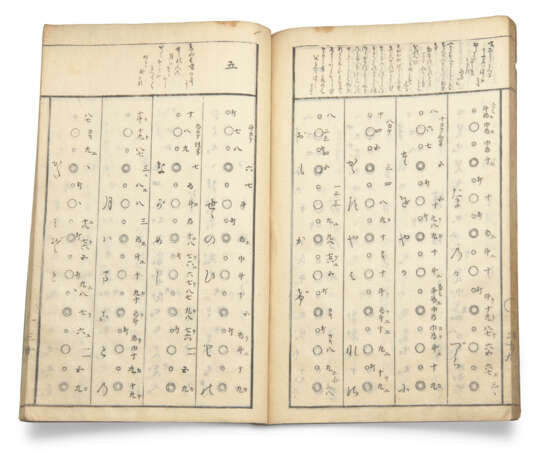ID 1053273
Lot 159 | Japanese Koto songs
Valeur estimée
£ 2 000 – 3 000
Collection of 40 Koto songs; Yamada Shokuku, The Koto Instrument, Building, Tuning and the Art of Playing It, blockprint in Japanese on paper, Japan, Edo, 1811
Staples of the Koto repertoire, one of the most important traditional instruments of Japan: 40 songs composed by Miji Shinshi, set to poetry by Osawa Yamatoshi and Yatsuhashi Kengyo, followed by elaborate illustrations of the instrument, its parts, and how to build it.
c.270 x 170mm, 6 vols., complete, vols. 1-5 in 6 columns of Koto music notation, poems at top of the page, up to 26 columns in Shodo (calligraphic cursive script); vol. 6 in 5 and 10 columns in Shodo and 10 columns of 19 Kanji (Chinese characters) each, woodblocks unsigned but numbered, the size of the woodblock c.250 x 290mm, 21 illustrations of the Koto instrument, its parts and making, 3 red owners’ seals: 2 in seal script and 1 very large (diam. 6 cm) illustrated, seal script. Contemporary blue paper covers, stitched on 4 stations (Xian Zhuang).
Provenance:
(1) Private collection, Japan (19th - 20th c.)
(2) Kimio Koketsu, Ohya-Shobo Ltd., Tokyo, acquired in 2006 by:
(3) Schøyen Collection, MS 5332.
Text and music:
This is the 3rd edition of this classical Koto song collection, which was first printed in 1779.
The Koto notation is written vertically in columns in a combination of numbers and characters divided by 3 different circles, while the corresponding Guzheng notation in China is notated horizontally with numbers, dots, lines and at times with some graphic notation added. The instrument is about 180cm long with 13 strings across 13 movable bridges. Tuning is made by moving the bridges before playing, and using 3 finger picks on the thumb, forefinger and middle finger to pluck the strings. The Koto came to Japan around 700 from China via Korea, largely deriving from the Chinese Guzheng which has 21 strings. In Korea there are 5-, 10- and 12-string versions. In Japan there is also a 17-string bass Koto. The Koto was initially played only in the Imperial court, but this changed primarily due to the influence of the blind Yatsuhashi Kengyo (1614-1684), who invented a new plain tuning (hira joshi) to play popular songs more naturally. He composed songs that are still irreplaceable staples of the Koto repertoire today, of which several are included in the present books (on the Koto, see H. M. Johnson, 'A "Koto" by Any Other Name: Exploring Japanese Systems of Musical Instrument Classification', Asian Music , Autumn, 1996 - Winter, 1997, Vol. 28, no 1 (Autumn, 1996 - Winter, 1997), pp.43-59).
The introduction here states: 'The Koto music makes men and women excited, and clear the clouds, and make the water run, and make the birds fly, and makes the fish dance'.
| Lieu d'origine: | Japon |
|---|---|
| Catégorie maison de vente aux enchères: | Manuscrits médiévaux et de la Renaissance |
| Lieu d'origine: | Japon |
|---|---|
| Catégorie maison de vente aux enchères: | Manuscrits médiévaux et de la Renaissance |
| Adresse de l'enchère |
CHRISTIE'S 8 King Street, St. James's SW1Y 6QT London Royaume-Uni | ||||||
|---|---|---|---|---|---|---|---|
| Aperçu |
| ||||||
| Téléphone | +44 (0)20 7839 9060 | ||||||
| Commission | see on Website | ||||||
| Conditions d'utilisation | Conditions d'utilisation |
